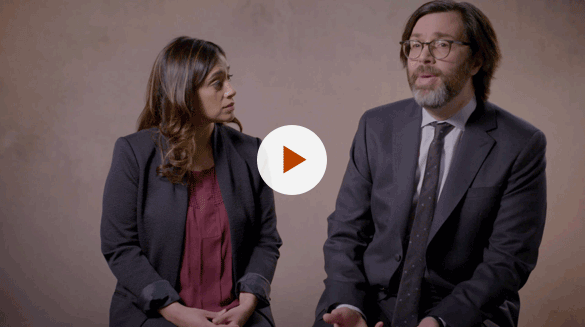 This website is best viewed
This website is best viewed
using the horizontal display
on your tablet device.
Go to Patient Website

Diagnosing hypertrophic
cardiomyopathy can be challenging1
Identifying HCM
Identification and monitoring of HCM can be challenging due to a variety of factors, such as2-5:
Patients with HCM are commonly asymptomatic or minimally symptomatic
Symptoms progress gradually and the presentation of the disease can vary across patients
Patients may subtly adapt their lifestyles to accommodate for the symptoms
Signs of HCM in a comprehensive physical exam
Investigate for HCM and conduct further diagnostic workup based on the presence of symptoms, abnormal ECG result, and/or systolic ejection murmur.6,7
Note: Although no specific ECG pattern is pathognomonic, these ECG anomalies are consistent with HCM.
ECG=electrocardiogram.
Note: Although no specific ECG pattern is pathognomonic, these ECG anomalies are consistent with HCM.
ECG=electrocardiogram.

Cardiac Imaging
Once HCM is suspected, cardiac imaging is essential for diagnosis6
HCM diagnosis in adults, conventionally established through cardiac imaging, is based on unexplained LV hypertrophy (LV wall thickness of ≥15 mm, or 13-14 mm with a family history of HCM or in conjunction with a positive genetic test).6
To help identify HCM, assess for systolic anterior motion (SAM) of the mitral valve and left ventricular outflow tract (LVOT) obstruction.6,9
2D and Doppler Echo can be used to determine the nature and severity of LVOT obstruction.6,9 Pulsed wave Doppler can determine the site of obstruction and continuous wave Doppler can determine the degree of obstruction.9,10




SAM of the mitral valve is one of the causes of LVOT obstruction.6,9
LVOT obstruction is a critical feature of obstructive HCM associated with adverse HCM-related outcomes, but can sometimes only be seen in some patients when provoked with exercise. Echos with provocation can reveal the structural and functional abnormalities consistent with HCM.6,11,12
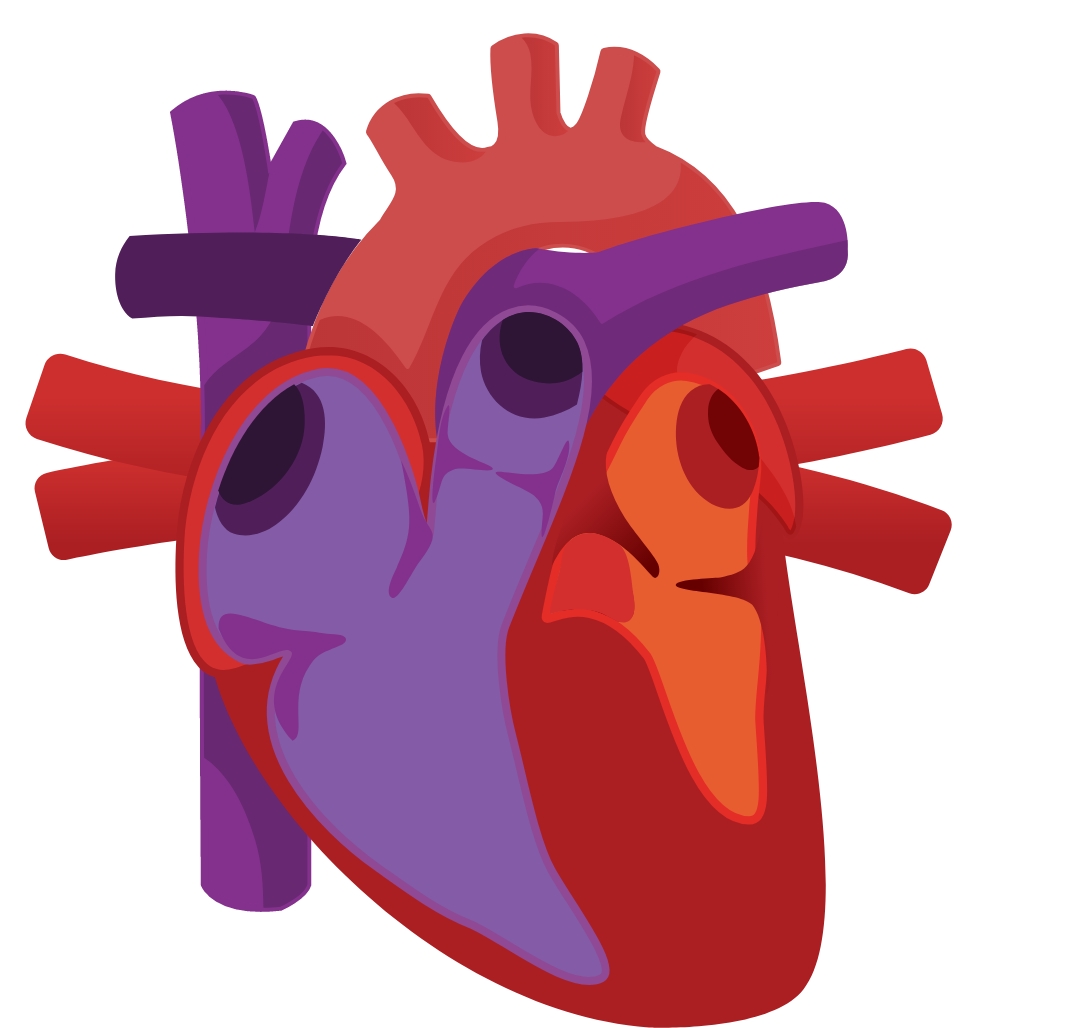
Consider cardiac magnetic resonance (CMR) imaging to confirm a diagnosis
When echo findings are inconclusive and if CMR imaging is unavailable, the CMR imaging provides complementary information or an alternative option in cases where an echo is inconclusive.6 CMR can be valuable in determining the patient’s particular type and presentation of HCM, especially in areas that are difficult to see with echo. If CMR imaging is unavailable, the 2020 AHA/ACC Guidelines recommend considering cardiac CT for diagnosis.6
HCM can present with a diverse pattern of hypertrophy13
HCM can present with a diverse extent and pattern of hypertrophy, occurring at any location from the apex to the base.14
A National Heart, Lung, and Blood Institute prospective registry study of 2755 HCM patients, with a mean age of 49 years, identified the frequencies of 6 morphological presentations of HCM. Among these presentations, localized/isolated basal septal hypertrophy and reverse septal curvature were the most common.13

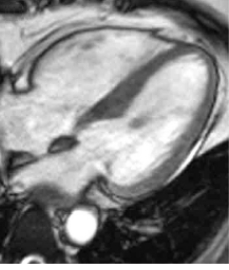
Localized/isolated basal septal hypertrophy13

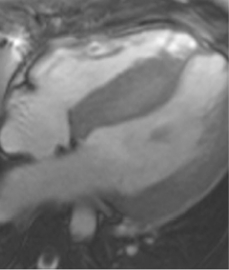
Reverse septal curvature13

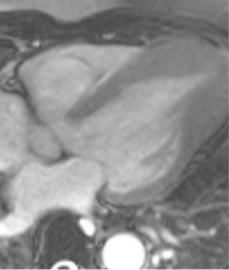
Apical HCM13

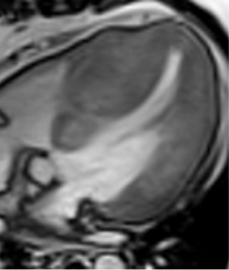
Concentric HCM13

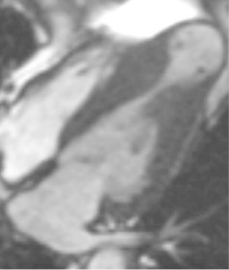
Mid-cavity obstruction with apical aneurysm13

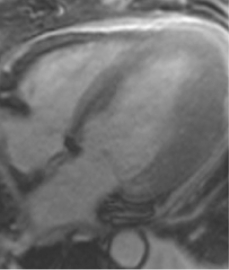
Other13


Localized/isolated basal septal hypertrophy13


Reverse septal curvature13


Apical HCM13


Concentric HCM13


Mid-cavity obstruction with apical aneurysm13


Other13
Images from Neubauer S, et al. J Am Coll Cardiol. 2019;74(19):2333-2345.

REFERENCES:
Stanford Health Care. Hypertrophic cardiomyopathy. Accessed June 14, 2021. https://stanfordhealthcare.org/medical-conditions/blood-heart-circulation/hypertrophic-cardiomyopathy.html
Maron BJ, Towbin JA, Thiene G, et al. Contemporary definitions and classification of the cardiomyopathies: an American Heart Association Scientific Statement from the Council on Clinical Cardiology, Heart Failure and Transplantation Committee; Quality of Care and Outcomes Research and Functional Genomics and Translational Biology Interdisciplinary Working Groups; and Council on Epidemiology and Prevention. Circulation. 2006;113(14):1807-1816.
Jacoby DL, DePasquale EC, McKenna WJ. Hypertrophic cardiomyopathy: diagnosis, risk stratification and treatment. CMAJ. 2013;185(2):127-134.
Jacobs C. Hypertrophic cardiomyopathy in adults: an overview. J Am Assoc Nurse Pract. 2014;26(9):465-470.
Mayo Clinic. Hypertrophic cardiomyopathy. June 2, 2020. Accessed April 28, 2021. https://www.mayoclinic.org/diseases-conditions/hypertrophic-cardiomyopathy/symptoms-causes/syc-2035019
Ommen SR, Mital S, Burke MA, et al. 2020 AHA/ACC guideline for the diagnosis and treatment of patients with hypertrophic cardiomyopathy: a report of the American College of Cardiology/American Heart Association Joint Committee on Clinical Practice Guidelines. Circulation. 2020;142(25):e533-e631.
Maron MS, Rowin EJ, Maron BJ. How to Image Hypertrophic Cardiomyopathy. Circ Cardiovasc Imaging. 2017;10(7):e005372.
Finocchiaro G, Sheikh N, Biagini E, et al. The electrocardiogram in the diagnosis and management of patients with hypertrophic cardiomyopathy. Heart Rhythm. 2020;17(1):142-151.
Nagueh SF, Bierig SM, Budoff MJ, et al. American Society of Echocardiography clinical recommendations for multimodality cardiovascular imaging of patients with hypertrophic cardiomyopathy: Endorsed by the American Society of Nuclear Cardiology, Society for Cardiovascular Magnetic Resonance, and Society of Cardiovascular Computed Tomography. J Am Soc Echocardiogr. 2011;24(5):473-498.
Losi MA, Nistri S, Galderisi M, et al. Echocardiography in patients with hypertrophic cardiomyopathy: usefulness of old and new techniques in the diagnosis and pathophysiological assessment. Cardiovasc Ultrasound. 2010;8:7.
University of Maryland Medical Center. Hypertrophic cardiomyopathy types, symptoms and causes. Accessed June 14, 2021. https://www.umms.org/ummc/health-services/heart-vascular/services/hypertrophic-cardiomyopathy/types-symptoms-causes
Patel P, Dhillon A, Popovic ZB, et al. Left ventricular outflow tract obstruction in hypertrophic cardiomyopathy patients without severe septal hypertrophy: implications of mitral valve and papillary muscle abnormalities assessed using cardiac magnetic resonance and echocardiography. Circ Cardiovasc Imaging. 2015;8(7):e003132.
Neubauer S, Kolm P, Ho CY, et al. Distinct subgroups in hypertrophic cardiomyopathy in the NHLBI HCM Registry. J Am Coll Cardiol. 2019;74(19):2333-2345.
Rowin EJ, Maron MS. The role of cardiac MRI in the diagnosis and risk stratification of hypertrophic cardiomyopathy. Arrhythm Electrophysiol Rev. 2016;5(3):197-202.

Back To Top
 This website is best viewed
This website is best viewed
using the vertical display
on your mobile device.
